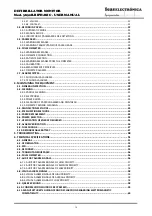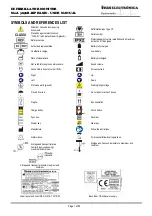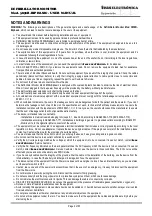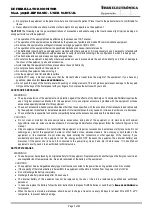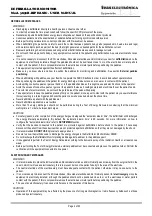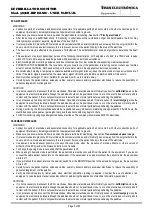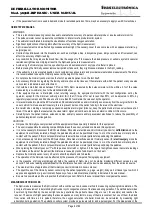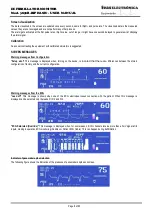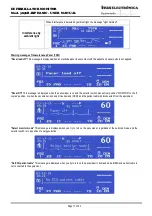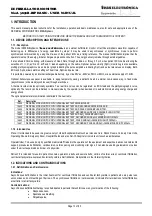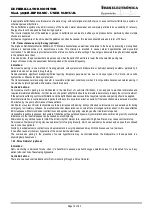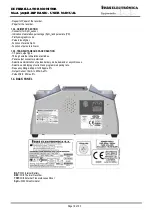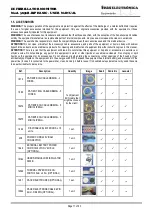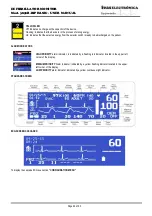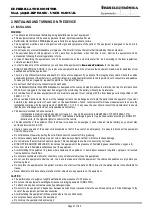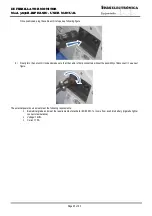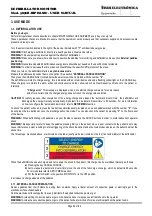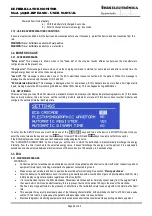
DEFIBRILLATOR MONITOR
Mod. 3850B-BIPHASIC - USER MANUAL
Page 14 of 63
Inappropriate defibrillation or cardioversion of a patient (e.g. without malignant arrhythmia) can cause ventricular fibrillation, asystole or
other dangerous arrhythmias.
The defibrillation asystole may inhibit recovery of the heart’s natural pacemaker and completely eliminate any possibility of recovery.
Energy should not be applied routinely during asystole.
The incorrect application of the paddles or gel pad in defibrillation can lead to inefficacy and produce burns, particularly when multiple
shocks are delivered.
Erythema or hyperemia of the skin under the paddles can often be caused; this redness should decrease in term of 72 hours.
1.2.2. Transcutaneous pacing therapy (optional)
The Biphasic Defibrillator Monitor 3850B with TPM allows transcutaneous electrical stimulation to the heart by delivering a monophasic
stimulus in demand mode or in asynchronous mode. This stimulus is intended to cause cardiac depolarization and myocardial
contraction. The medical care provider selects the stimulus current and rate settings. The energy is delivered through electrodes applied
to the patient’s bare chest.
In demand mode, the pacemaker delivers pulses only when the patient's heart rate is lower than the selected pacing rate.
In asynchronous mode, the pacemaker delivers pulses at the selected frequency.
Indications:
Non-invasive pacing is one method of treating patients with symptomatic bradycardia or hemodynamically unstable, particularly in
patients who do not respond to drug therapy.
Hemodynamically significant bradyarrhythmias requiring temporary pacemaker are due to various types of AV block, sinus node
dysfunction or bifascicular block symptomatic.
The transcutaneous cardiac pacing is useful in reversible or transient conditions or when it is not possible transvenous cardiac pacing. It
can also be helpful in patients with asystole, if performed early.
Contraindications:
Non-invasive electric pacing is contraindicated in the treatment of ventricular fibrillation, it not respond to electrical stimulation and
requires immediate defibrillation. For that reason, the patient arrhythmia should be immediate determinate to apply the correct treatment.
If the patient is suffering ventricular fibrillation and the defibrillation was successful but asystole is produced, pacing should be applied.
Electrical stimulation is contraindicated in patients with asystole by cardiac arrest, especially if the resuscitation were delayed more than
20 minutes, by the poor performance of these patients.
Ventricular or supraventricular tachycardia could be interrupted with pacing, but synchronized cardioversion is quicker and safer during
emergency to circulatory collapse. An electromechanical dissociation can occurs after a prolonged cardiac arrest; in this case effective
ECG response without mechanical contractions can be produced by pacing, whereby another treatment is required.
Undesirable repetitive responses, tachycardia, fibrillation with generalized hypoxia, myocardial ischemia, cardiac drug toxicity, electrolyte
imbalance or other heart diseases can be caused by electric pacing.
Stimulation by any method tends to inhibit the intrinsic rhythm. Abrupt rate, especially in high heart rates, may cause ventricular stop.
Non-invasive Temporary Pacing may cause discomfort of varying intensity, which can sometimes be serious and oppose the continued
use in conscious patients.
Similarly, inevitable muscle contraction can be problematic in very ill patients and may limit continuous use to a few hours.
It can often cause erythema or hyperemia of the skin under the electrodes.
The non-invasive pacing in the presence of severe hypothermia may be contraindicated; the bradycardia in these patients is a
physiological phenomenon.
1.2.3. Pulse Oximeter (optional)
Indications:
SpO
2
monitoring is indicated for use when it is beneficial to assess a patient’s oxygen saturation level. It is indicated for use in any
patient who is at risk of developing hypoxemia.
Contraindications:
There are no known contraindications for SpO
2
monitoring through a Pulse Oximeter.

